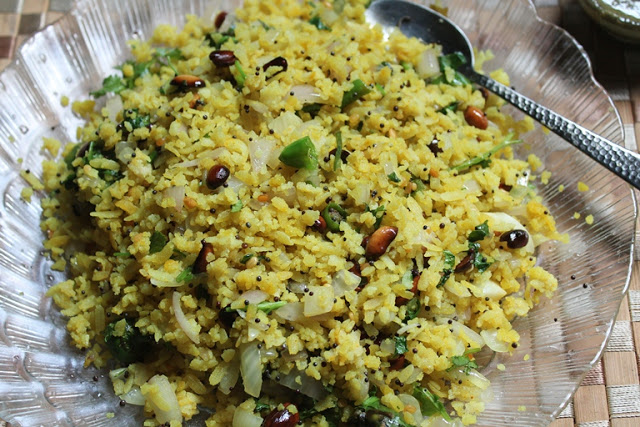- Lactose-free, heart-healthy and fat free
- Gluten-free, it can be consumed by those allergic to wheat products
- Good source of instant energy as it is rice-based and it will stave off hunger cravings.
- Poha rice is light and easy to digest
- Provides the vitamin b1 and hence aids in stabilizing blood sugar.
- Peanuts are usually added to poha preparation and are a good source of antioxidants and protein.
- It contains 20 mg of iron in every 100g raw rice flakes, squeezing a cut lemon on the poha helps in improving iron absorption.
- Contain the right amount of Vitamin B
- Poha acts as a good probiotic.
- Rich in Carbohydrates
Differnent Type of Poha Recipies
Phoa can be made up of different rice and there are two poha recipes: Red Poha & White Poha. A healthier version of the everyday poha is the red poha, which is made from red rice. The red colour is due to the presence of a pigment called anthocyanin, which is also a flavonoid.
Process of Make Poha
- Take poha in a large strainer.
2. Wash it 1-2 times by gently swifting them with your fingers under running water. Drain the excess water through a strainer. Sprinkle salt and sugar over it, mix/toss well and keep aside.
3. Heat 2-tablespoons oil in a pan. Add mustard seeds; when they start to splutter, add cumin seeds, green chilies, curry leaves, peanuts and a pinch of asafoetida. Allow them to sizzle until chilies turn crisp for approx. 30-40 seconds.
4. Add chopped onions and sauté until onions turn translucent.
5. Add chopped potatoes and salt (add salt only for potatoes).
6. Mix well and cook covered until potatoes turn tender. This will take around 3-4 minutes. Stir in between occasionally to prevent sticking.
7. Add turmeric powder.
8. Mix well and cook for a minute.
9. Add soaked poha.
10. Mix well.
11. Cook for 2-3 minutes. Add lemon juice, dry grated coconut and finely chopped coriander leaves.
12. Mix well and turn off the flame. Batata poha is ready for serving.

